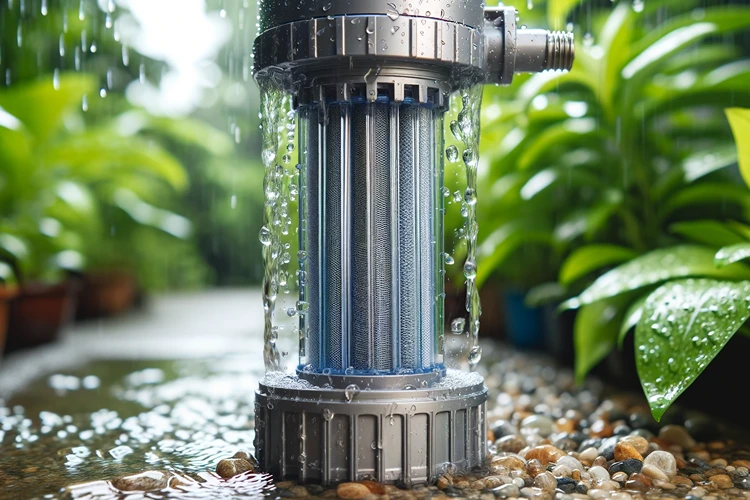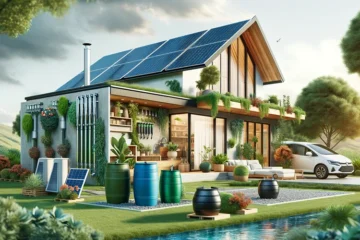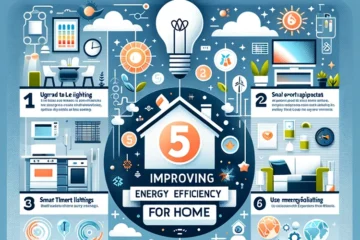Rainwater Harvesting Systems for New Homes

As environmental sustainability becomes a priority for homeowners around the globe, rainwater harvesting systems emerge as a practical solution to water conservation challenges. This guide offers an in-depth look at implementing rainwater harvesting in new homes, from understanding its importance to navigating installation and maintenance, ensuring your venture into sustainable living is both rewarding and efficient.
The Basics of Rainwater Harvesting
Rainwater harvesting is more than just collecting rain; it’s about taking a proactive step towards self-sufficiency and environmental stewardship. By capturing rainwater from roofs and storing it for future use, homeowners can reduce their reliance on municipal water systems, decrease utility bills, and contribute to a healthier ecosystem. This section explores the fundamentals of rainwater harvesting, including the science behind it and the benefits it brings to modern homes.
Why Rainwater Harvesting?
The rationale for rainwater harvesting extends beyond mere water savings. It encompasses environmental benefits such as reducing stormwater runoff, which can carry pollutants into streams and rivers, and mitigating the impact on local water infrastructure. Additionally, it enhances water security for households, providing an alternative source during droughts or water restrictions.
Components of a Rainwater Harvesting System

A comprehensive rainwater harvesting system includes several components: catchment area, conveyance system, first-flush device, storage tanks, filtration system, and distribution system. Each component plays a vital role in ensuring the harvested rainwater is clean, safe, and readily available for use. Understanding these components allows homeowners to customize their system based on specific needs and local climatic conditions.
Designing Your Rainwater Harvesting System
Designing an efficient rainwater harvesting system requires attention to detail and careful planning. This section delves into the considerations and steps involved in designing a system tailored to your home’s requirements, from calculating catchment potential to selecting the right storage solutions and ensuring water quality.
Calculating Catchment Potential
The amount of rainwater your system can collect is influenced by the size and material of your catchment area, usually the roof, and local rainfall patterns. Detailed calculations help estimate the potential volume of water you can harvest, guiding the size of storage tanks and the design of the filtration system.
Storage Solutions
Choosing the right storage solution is critical for maximizing the benefits of a rainwater harvesting system. Options range from above-ground barrels to underground cisterns, each with its advantages and considerations. This subsection explores the factors to consider when selecting storage tanks, including material, capacity, and placement.
Ensuring Water Quality
Maintaining the quality of harvested rainwater is essential, especially if it’s to be used for indoor purposes. This section covers the various filtration and purification methods available, from simple mesh filters to more complex UV purification systems, ensuring the water you collect is safe for use.
Implementing Your Rainwater Harvesting System
With a design in hand, the next step is implementation. This section guides you through the installation process, highlighting the importance of professional assistance, compliance with local regulations, and integration with existing plumbing systems. Detailed insights into the construction and setup of each system component ensure a smooth installation process.
Installation Best Practices
Successful installation of a rainwater harvesting system hinges on best practices that ensure efficiency and durability. This includes proper placement of tanks, secure installation of gutters and downspouts, and the correct setup of the filtration system. Tips and tricks from experts can help avoid common pitfalls and ensure your system operates at its best.
Legal Considerations and Compliance
Navigating the legal landscape is crucial for any rainwater harvesting project. This section addresses the importance of understanding local regulations, obtaining necessary permits, and ensuring your system meets all legal requirements, providing peace of mind and legal protection for homeowners.
Maintaining Your Rainwater Harvesting System
Regular maintenance is key to the long-term success of your rainwater harvesting system. This comprehensive guide covers everything from routine inspections and cleaning to troubleshooting common issues, ensuring your system remains efficient and effective over time.
Routine Maintenance Tasks
Detailing the essential maintenance tasks, such as cleaning gutters and tanks, checking for leaks, and replacing filters, this section provides a maintenance schedule to help homeowners keep their systems in top condition.
Troubleshooting and Repairs
Despite the best efforts, issues can arise. This subsection offers solutions to common problems encountered with rainwater harvesting systems, from clogged filters to pump failures, ensuring homeowners are equipped to handle minor repairs and know when to call in professionals.
Maximizing the Benefits of Your Rainwater Harvesting System
This final section explores advanced strategies for leveraging your rainwater harvesting system, from integrating it with irrigation systems to using harvested water for indoor non-potable applications. Innovative uses and smart technology can enhance the efficiency and convenience of your system, making sustainable living easier than ever.
Advanced Applications and Technologies
Innovations in rainwater harvesting technology offer new ways to utilize collected rainwater, from smart monitoring systems to greywater integration. This subsection examines the cutting-edge applications and devices that can elevate your system’s performance and sustainability.
Financial Incentives and Rebates
Many regions offer financial incentives to encourage rainwater harvesting. This section provides information on available rebates, tax credits, and other incentives, helping homeowners offset the initial investment and maximize their financial savings.
FAQs
Embracing rainwater harvesting is not just an investment in your home; it’s a commitment to a sustainable future. By understanding the intricacies of rainwater harvesting systems for new homes, you can make informed decisions that benefit both your household and the environment.
This guide equips you with the knowledge to implement, maintain, and maximize a rainwater harvesting system, ensuring a seamless integration into your sustainable lifestyle.
Additional Resources:
- Environmental Protection Agency (EPA) – Rainwater Harvesting: The EPA provides comprehensive guides on rainwater harvesting, focusing on its benefits, implementation strategies, and regulatory considerations. It’s a valuable resource for understanding the environmental impact and best practices. Visit the EPA’s official website for more information.
- American Rainwater Catchment Systems Association (ARCSA): ARCSA is dedicated to promoting sustainable rainwater harvesting practices in the United States. Their website offers educational resources, certification programs, and guidelines for both residential and commercial projects. Learn more about rainwater harvesting at ARCSA.
- International Rainwater Harvesting Alliance (IRHA): The IRHA focuses on the global promotion of rainwater harvesting. It provides resources, research, and case studies on the use of rainwater harvesting to address water scarcity and improve sustainable water management. Explore global initiatives on IRHA’s website.
- National Oceanic and Atmospheric Administration (NOAA) – Precipitation Data: NOAA offers detailed precipitation data and climate information, which can be crucial for planning and optimizing rainwater harvesting systems. Access precipitation data on NOAA’s website.
- BuildingGreen – Sustainable Building Materials: For those interested in integrating rainwater harvesting systems into sustainable building designs, BuildingGreen offers insights into eco-friendly materials and technologies that complement water conservation efforts. Discover sustainable building resources at BuildingGreen.


